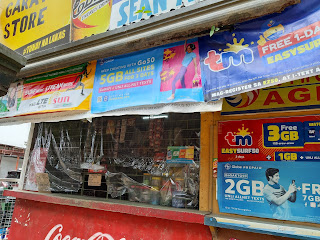- Living in the Philippines - Communication and Idioms
Languages in the Philippines
There are over a hundred different languages in the 7641 or so islands that comprise the Philippines. English is one of the official languages. In my experience, most people speak at least a little English. Among the native languages, Tagalog, now known as Filipino, might be the most common and is the other official language of the Philippines.
Nearly as many natively speak Cebuano. In Mindanao and parts of the Visayas Cebuano is known as Bisaya. Where Lyn is originally from in Central and Northern Mindanao as well as Dumaguete (Negros Oriental) where we lived before, and Tagbilaran (Bohol) where we live now, Bisaya is spoken.
Common Terminology in the Philippines
Though there are
Seven-Elevens and other convenience store franchises in the
Philippines, the most common variety is a small home-based,
not-at-all-franchised store known as a sari-sari. A sari-sari sells
whatever the owner wants to sell, normally snacks, drinks, and common
household products.
A bathroom in the
Philippines is known as a CR (comfort room). Air conditioning is commonly called air con. A refrigerator is a ref.
Unlimited food,
drinks, or internet service is called unli (un lee). Thus unli rice
means you can eat as much rice as you want.
I have noticed that
to become very upset or angry at someone is to have “high blood
pressure” or “high blood.”
An unlicensed,
sometimes untrained, health care worker who does not dispense
pharmaceuticals, but might use herbal remedies, massages or
chiropractic-like adjustments, and operates out of his/her home, and
in some circles is highly respected, is known as a quack doctor or
healer.
Chiropractors are rare in the Philippines. Massage therapists are very common. It is common to be able to get a one hour professional Thai or Swedish massage for 250 to 400 php ($5 to $8 US).
Chiropractors are rare in the Philippines. Massage therapists are very common. It is common to be able to get a one hour professional Thai or Swedish massage for 250 to 400 php ($5 to $8 US).
If you think, “I’d
like to be like that,” you would say, “sana all.”
Filipinos often
point at something or someone using their lips.
 |
| Wendie is pointing (not trying to kiss someone) |
Traffic in the Philippines
Most people would say, and I would agree, that downtown traffic in the Philippines is horrendous. But here are a couple of things I like better in the Philippines than in America:



Comments
Post a Comment